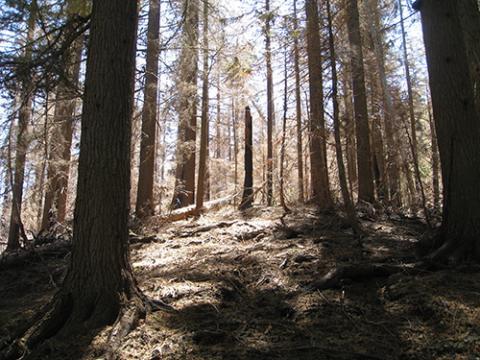Wildfires burning in mesic mixed-conifer forests provide an opportunity to understand fire-induced tree mortality and subsequent regeneration dynamics.
The Grizzly and Tower wildfires burned on the Idaho Panhandle National Forest during the summer of 2015. These fires burned in areas of mesic forests dominated by mixed conifer consisting primarily of western hemlock, grand fir and western red cedar. This project will monitor fire-induced tree mortality in grand fir and western hemlock forests to validate and improve upon existing mortality models. It will also compare regeneration dynamics in salvage and non-salvage areas to determine the success of planted western white pine with different post-fire management.
The area historically was dominated by western white pine, but introduction of white pine blister rust and salvage logging in the mid-1900s greatly reduced white pine frequency. Genetically improved white pine is now available for planting to try to restore some of these sites to white pine forests.
The objectives of this study are to collect wildfire severity measurements, fire injury, and mortality in three wildfires that burned in 2015 on the Idaho Panhandle National Forest in order to:
1) Evaluate accuracy of fire-induced tree mortality model in FOFEM for western hemlock, grand fir and western red cedar
2) Develop mortality models for western hemlock, grand fir and western red cedar and compare with existing models
3) Compare regeneration dynamics in salvage and unsalvaged areas
